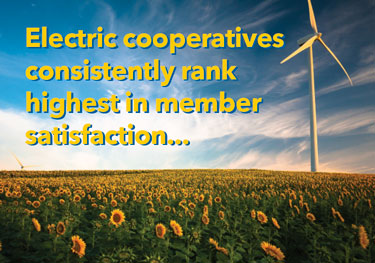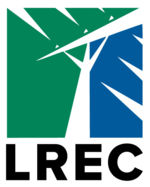Throughout the last decade, Great River Energy and many of its member cooperatives have successfully achieved meeting the annual energy savings goals and conservation spending requirements established by the Minnesota Legislature. Beyond the 700 million kilowatt-hours in energy savings at the distribution cooperative level since 2010, Great River Energy has realized significant savings at its generation and transmission facilities. Its 28 member cooperatives surpass their energy savings goals by regularly engaging consumers and working to identify cost-effective energy efficiency investments.
While they have been able to meet the goals on a consistent basis, it is always done despite a number of challenges unique to electric cooperatives. For one, cooperatives serve the fewest number of people but their electric lines cover more than 75 percent of the U.S. landmass.
 Along with that, 65 percent of Great River Energy’s total energy sales come from rural, residential member-consumers and, today, there are fewer energy savings opportunities in these households because of continued improvements to building codes, appliance standards, and limited new home construction. Nearly 80 percent of Minnesota residential cooperative members also have income levels below the state average, which limits consumer investment in energy conservation measures as well.
Along with that, 65 percent of Great River Energy’s total energy sales come from rural, residential member-consumers and, today, there are fewer energy savings opportunities in these households because of continued improvements to building codes, appliance standards, and limited new home construction. Nearly 80 percent of Minnesota residential cooperative members also have income levels below the state average, which limits consumer investment in energy conservation measures as well.
“The objectives of state policies are laudable, but any further increase in the conservation goal would result in excessive financial hardship for both electric cooperatives and consumers, especially as an increase in energy savings isn’t needed to offset the construction of a new power generation facility,” said Jeff Haase, strategic energy and efficiency program representative at Great River Energy.
The one-size-fits-all-utilities approach to the state’s policy does not account for the challenges presented to electric cooperatives that serve more rural areas. The annual savings of Great River Energy’s energy efficiency programs actually exceeds the total annual sales of several of its smaller member cooperatives.
Electric cooperatives consistently rank highest in member satisfaction among the three types of utilities (investor owned, municipals, and cooperatives), in part due to serving consumers as member-owners, not customers. They are rooted in their local communities, ready and able to respond to questions or concerns from members and keep the consumer’s best interest in mind, especially as it pertains to affordability.
Great River Energy and its member cooperatives will continue making a good faith effort to meet future energy savings goals by educating consumers about the importance of saving energy and encouraging participation in energy efficiency programs. Possible future revisions to Minnesota policy that acknowledge the unique challenges of the state’s electric cooperatives would help cooperatives meet future goals and protect them and their member-consumers from undue harm.
 Lake Region Electric Cooperative
Lake Region Electric Cooperative